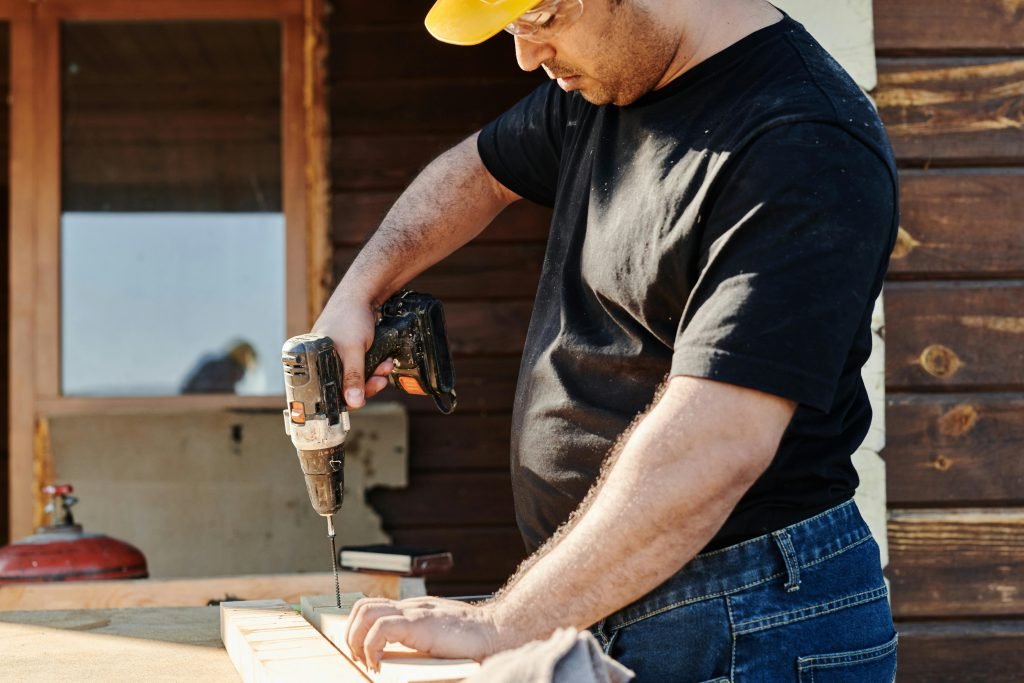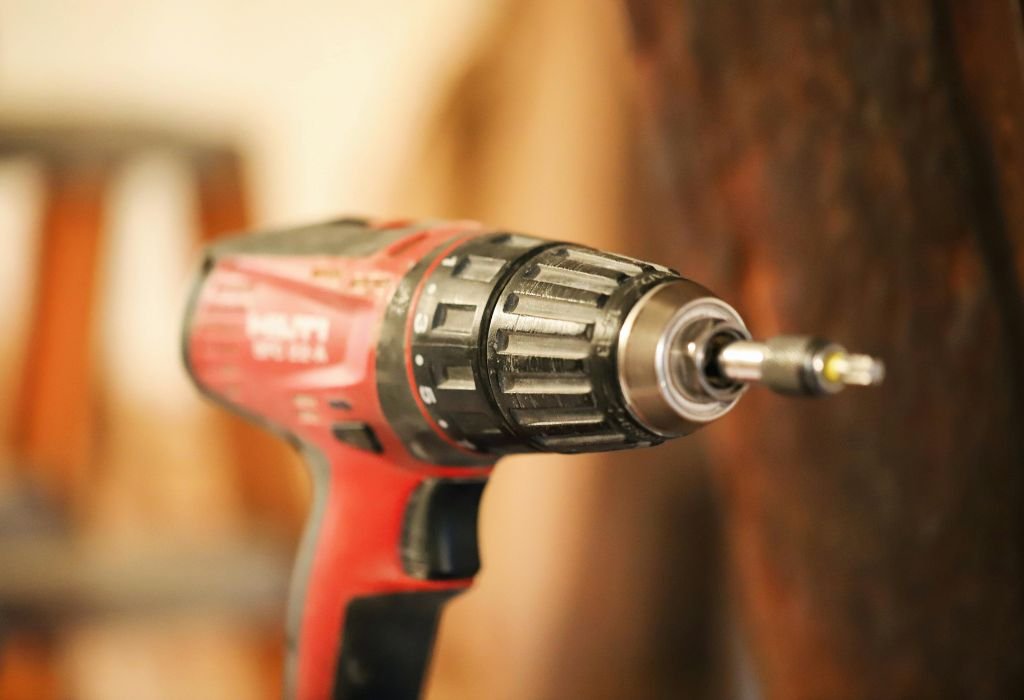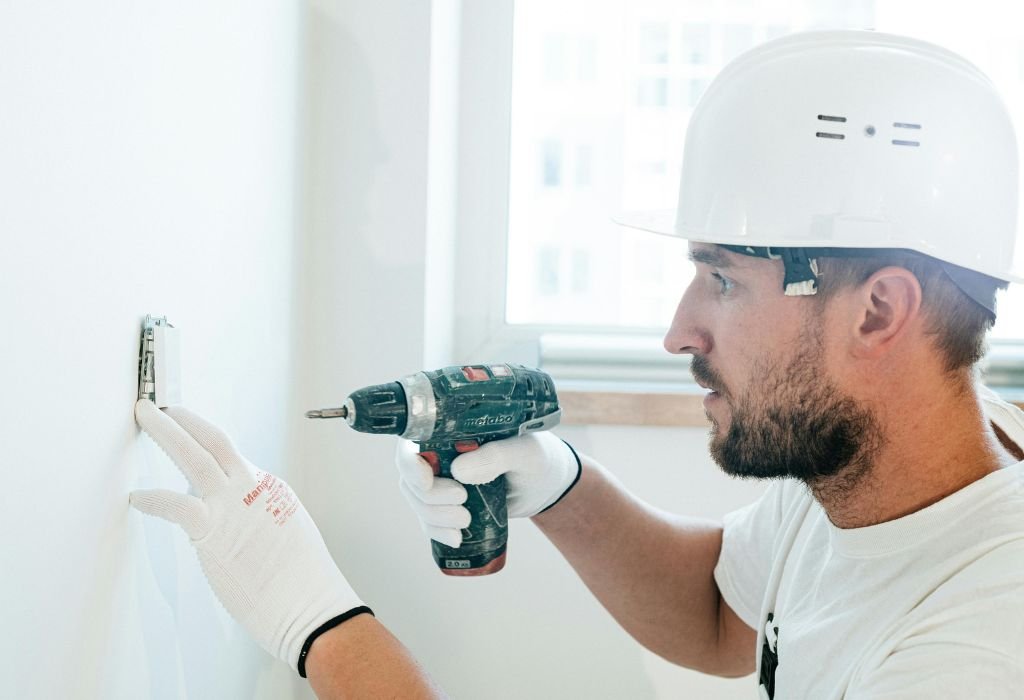A homeowner stands in the hardware store staring at rows of cordless drills, each promising power and reliability.
The question running through their mind is simple: what size cordless drill do I need to finish my projects without frustration.
Choosing the wrong drill can waste money, slow down tasks, and even damage materials.
A drill that is too small struggles with thick wood, while a drill that is too large feels heavy and exhausting for simple jobs.
Cordless drills have become the go-to tool for both homeowners and professionals because of their versatility.
From assembling furniture to drilling into masonry, they are designed to handle a wide range of applications.
The global power tools market surpassed $40 billion in 2023, proving just how essential these tools are worldwide (Grand View Research).
Among them, cordless drills account for nearly 30% of all handheld power tool sales globally, making them one of the most in-demand tools today (Statista).
These numbers highlight how important it is to select the right size for the right task.
Homeowners doing light DIY projects often require compact 12V drills for convenience.
Contractors or frequent DIYers usually depend on 18V or 20V drills that balance power with portability.
Heavy-duty work like drilling into concrete or long screws may even require specialty hammer drills with higher voltage.
This guide will break down cordless drill sizes, explain their advantages, and help you decide which one matches your needs.
By the end, you will have the clarity to choose the perfect drill size for any project, big or small.
Why Drill Size Matters in Cordless Tools

Drill size impacts power, torque, weight, and battery life. Choosing the right size ensures that projects are completed efficiently and comfortably.
Larger drills typically deliver more power but may be heavy to use for extended periods. Smaller drills are easier to handle but struggle with demanding materials.
Why is drill size important?
It determines the balance between power and comfort.
Do bigger drills always work better?
No, they can be unnecessarily heavy for small tasks.
Are smaller drills enough for DIY?
Yes, they handle light to medium jobs efficiently.
Does size affect battery runtime?
Yes, larger drills drain batteries faster.
Common Cordless Drill Sizes Explained
Cordless drills are typically available in 12V, 18V/20V, and higher volt options. Each size serves different purposes and user needs.
A 12V drill is lightweight and compact, perfect for everyday home repairs. An 18V or 20V drill provides more versatility for medium to heavy tasks.
High-voltage drills above 20V are mostly for professionals who work with concrete, masonry, or other tough materials. These drills provide the most torque but are bulkier and more expensive.
What is a 12V cordless drill best for?
Light DIY tasks like assembling furniture.
Is an 18V drill stronger than a 12V?
Yes, it offers more power for heavier work.
What is a 20V drill used for?
General home improvement and carpentry.
Do higher voltage drills exist for homeowners?
Yes, but they are primarily professional-grade.
What Size Cordless Drill Do I Need for Home Use?
Most household projects can be managed with 12V or 18V drills. The right size depends on the type of work being done.
For assembling furniture or hanging pictures, a compact 12V drill is sufficient. For drilling into hardwood or installing shelves, an 18V or 20V drill is more reliable.
Occasional heavy work like drilling into masonry may require a hammer drill feature. Having the right size drill avoids frustration and ensures smooth completion of tasks.
Which drill size works for everyday home tasks?
A 12V drill is ideal for light jobs.
Should I buy 18V for home use?
Yes, if you expect to handle medium-duty tasks.
Can a 20V drill handle both wood and metal?
Yes, it has the power for most home projects.
Do I need a hammer drill at home?
Only if you drill into concrete or brick.
What Size Cordless Drill Do I Need for Professional Work?
Professionals usually rely on 18V or 20V drills for durability and performance. These models provide the torque and runtime required for daily use.
Heavy-duty jobs such as construction often require drills above 20V. These tools handle long screws, dense wood, and concrete with ease.
12V drills are not practical for professional use since they lack sufficient power. Contractors value power, battery efficiency, and long-term reliability in their tools.
What drill size do professionals prefer?
Most rely on 18V or 20V cordless drills.
Are bigger drills better for construction?
Yes, higher voltage drills excel in heavy-duty work.
Is 12V enough for professional use?
No, it lacks durability and power.
Do pros use multiple batteries?
Yes, extra packs ensure uninterrupted work.
Drill Size and Torque – What You Need to Know

Drill size is directly linked to torque output. Larger drills deliver higher torque, which is essential for tougher materials.
Brushless motors also improve torque and efficiency compared to brushed models. This makes them popular among both DIYers and professionals.
Impact drivers differ from standard drills, offering higher torque in smaller packages. Choosing between them depends on whether you need drilling, driving, or both.
Does drill size affect torque?
Yes, larger drills usually generate more torque.
Are brushless drills stronger?
Yes, they are more efficient and durable.
Is torque more important than size?
Yes, torque dictates drilling strength.
Can a small drill drive long screws?
Yes, if torque settings are correct.
Battery Size and Runtime Considerations
Battery size determines how long your drill can run between charges. It also impacts the overall weight of the tool.
Common sizes range from 1.5Ah to 5Ah or more. Larger batteries last longer but add weight and cost.
Using two batteries and a charger ensures continuous workflow. This setup is common for professionals who cannot afford downtime.
Does a bigger battery last longer?
Yes, higher Ah equals longer runtime.
Are large batteries heavier?
Yes, they increase the drill’s weight.
Do small batteries work on big drills?
Yes, but runtime will be limited.
Is it worth owning multiple batteries?
Yes, it prevents unnecessary delays.
Specialty Drills and Their Sizes
Not all drills are designed for the same jobs. Specialty drills provide solutions for unique tasks.
Compact drills are useful in tight spaces where standard drills cannot fit. Right-angle drills work best for cabinetry and framing.
Hammer drills are designed for masonry and concrete. Each size and type caters to a specific need that standard drills may not fulfill.
When is a compact drill best?
For tight or awkward spaces.
Do right-angle drills replace standard drills?
No, they are for specific tasks only.
What drill size is best for concrete?
A 20V hammer drill or higher.
Do DIYers need specialty drills?
Not usually, unless tackling unique projects.
How to Choose the Right Cordless Drill Size for You

Choosing the right drill size starts with identifying your needs. Occasional DIYers do not need the same power as professional contractors.
Match the drill size to the materials you will work with most often. Consider ergonomics, weight, and comfort when making your decision.
Budget also plays an important role. Higher voltage drills cost more, but they provide better performance and durability.
How do I decide the right drill size?
Match power to the types of projects you handle.
Is bigger always better?
No, it may add unnecessary weight.
Should I consider ergonomics?
Yes, comfort is crucial for long tasks.
Does budget affect drill choice?
Yes, higher voltage usually means higher cost.
Market Trends in Cordless Drill Sizes
The cordless drill market continues to grow rapidly. Manufacturers are focusing on improving efficiency, portability, and battery performance.
18V and 20V drills remain the most popular across consumer and professional markets. Compact 12V drills are rising in popularity for lightweight home use.
Lithium-ion batteries dominate the market for their rechargeability and long life. Future models are expected to be lighter and more powerful.
What drill size is most popular?
18V and 20V dominate sales worldwide.
Are 12V drills gaining demand?
Yes, for casual DIY and quick tasks.
Is battery technology improving drill sizes?
Yes, lithium-ion enables lighter, stronger tools.
Will drill sizes keep evolving?
Yes, innovation continues to balance power with portability.
Conclusion
The answer to what size cordless drill do I need depends on the type of work you do. For light home repairs, a 12V drill is sufficient, while 18V and 20V drills cover most medium to heavy projects.
Professionals and frequent users may prefer higher volt or specialty drills. Choosing the right size ensures projects are completed efficiently, safely, and with less effort.
By matching drill size to your needs, you save time, reduce frustration, and get the best value from your investment. The right drill transforms every project into a smooth and successful experience.

I’m John F. Nicholas, the founder, lead writer, and drill enthusiast behind 101drill.com. With years of hands-on experience in power tools and DIY projects, I created this platform to share practical knowledge, expert tips, and real-world insights to help others master the art of drilling.
